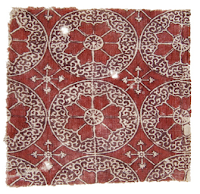She sells sea shells on the sea shore… !
Do you ever go to the beach and are really fascinated by all the different types of shells? Even before I pursued archaeology, I was (am) the girl who loved collecting shells from beaches she visited. I even wore earrings and necklaces made of shells (I still do, sometimes). I did not understand their morphology (form) as I do now but just the fact that they come in such different shapes, sizes, colours and patterns got me hooked. As it happens, I am not the first person to be so fascinated by shells. From thousands of years ago, the prehistoric people loved collecting and adorning themselves with shells too. The oldest example of shells used as jewellery comes from the prehistoric site of Skhul in Israel. Shells of a certain species (gastropod - Nassarius gibbosulus) were found with perforations from the same layer as 10 human fossils. Archaeologists believe these were used as beads for ornamentation by early humans. The layer from which shells were found is dated to 100,000 - 135,000 years Before Present. A similar story also emerged from the site of Oued Djebbana in Algeria with the same species of shells used as beads around the same time bracket i.e. 120,000 years BP.
Like shells are used as a dietary item during the present times, they were commonly eaten by our ancestors in many parts of the globe. The deposits of shells discarded by past humans are called shell middens and there is a specialized branch of archaeologists who study these. Shell middens are found quite commonly on marine archaeological sites. But apart from being a food item and an ornament, what is the significance of shells in our world? What other purposes have they served over time? Read on to find out.
In scientific terms, shells are called molluscs. These are internally soft bodied animals that build their own external shells by releasing calcium carbonate. These are usually in the shape of a single coil (gastropod) or a pair of two shells (bivalves). Gastropods, for example snails, live in water as well as land whereas bivalves, for example mussels, oysters, etc. primarily live in water. All types of shells prefer climatic conditions with moisture content, basically they need humidity to survive. Shells are extremely sensitive to their environments. Every shell species requires different levels of moisture, salinity (level of salt in water) and temperature to survive. This means they can be used for reconstructing environments from ancient times.
In the Indian subcontinent, shells became a very important part of trade and commerce during the Harappan times onwards. They were used to produce items such as beads, bangles, gamesmen, inlays and even table ware such as ladles. Shell artefacts have been reported widely from archaeological sites such as Khirsara, Nageshwar, Bet Dwarka, Langhnaj, Navdatoli, Inamgaon, Daimabad, etc. The list is long and covers all time periods from Mesolithic to Medieval.
| Fragment of a shell ladle from Khirsara, after Deshpande-Mukherjee et al., 2014 |
 |
| Different types of shell bangles during Historical times from Vadnagar, excerpt from a piece by ToI (credit: https://static.toiimg.com/photo/imgsize-141255,msid-66801203/66801203.jpg) |
Shells have also been used as currency. Species like Monetaria moneta and Monetaria annulus or more popularly recognised as cowrie/ cowry shells were used as a medium of payment. Since they all have similar size and shapes it was easy to count and weigh them to determine the amount of payment. Earliest known examples of these being used as currency are from China, going back to the 13th c BCE. In fact, in India some Naga tribes were reported to be using shells as currency until very recently.
During the present times, in India one can see shells being used for a variety of purposes such as a food item, for ornamentation and crafts and even as a part of decorations on clothing (see picture).
 |
| Modern shell necklace and earrings |
 |
| A choli with shell hanging decorations |
I hope this small write-up helped in enhancing your understanding of how shells were used by ancient people!
Bhakti G
Note: None of the information I have provided belongs to me, respective sources have been listed in the references, cheers!
References:
Vanhaeren, M., d'Errico, F., Stringer, C., James, S. L., Todd, J. A., & Mienis, H. K. (2006). Middle Paleolithic shell beads in Israel and Algeria. Science, 312(5781), 1785-1788.
https://www.citeco.fr/10000-years-history-economics/the-origins/cowry-shells-a-form-of-currency
Deshpande, A. (1996). Application of Molluscan Studies in Archaeology with Reference to Western India. Bulletin of the Deccan College Research Institute, 56, 355-361.
Deshpande-Mukherjee, A. (2008). Archaeomalacological research in India with special reference to early historic exploitation of the sacred conch shell (Turbinella pyrum) in Western Deccan. Early Human Impact on Megamolluscs, 1865, 209-222.



very informative .. just wondering if there could be shell combs...
ReplyDeleteHi Dipika, it is a really interesting question. I did some searching. There are no records of combs made of sea shells per se, although there are combs made out of tortoise shells.
DeleteOne interesting article did pop-up about shell combs but they are for tattooing purpose so their teeth are not deeply cut. They were used in Polynesia and are probably the earliest tattooing equipments found till date. These are made out of mother-of-pearl oysters (Pinctada margaritifera)
Here's a link to the article: https://doi.org/10.4000/jso.7019
Update: the oldest shell beads are now thought to be at least 142,000 years old. They have been reported from a cave 10 miles inland from the coast in Morocco.
ReplyDelete